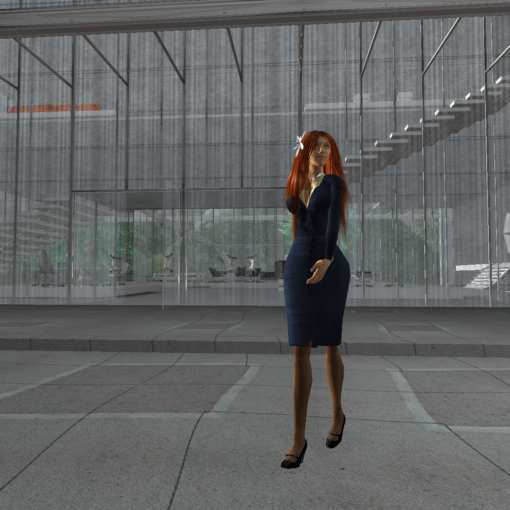Not even the real world is that good. With a photocopier you can always copy pictures or books; and you can get a cheap scanner and printer to copy whatever you wish at will. A tape recorder — or a MP3 digital recorder — will allow you to illegitimately record a live show from a performer and replay it in the comfort of your home. More to the point, and closer to virtual worlds, if you are a digital content artist and are used to sell your objects on marketplaces like Renderosity, you are aware that each time someone buys your content there, they’re a potential spreader of an infinite amount of (unlicensed) copies of your content. And so on: the real world has no in-built copy protection mechanisms. It has, however, laws.
Thus, in a sense, Second Life has this unique characteristic that it not only allows everyone to freely create content, but it also implements copyright laws and licensing facilities as code. Code-as-law — the ultimate dream of so many leftist groups — is actually built-in SL, at least on the intellectual property side of the issue — enabling safe commerce (in the sense that SL is the only place where any content creator can legitimately sell their digital content without fear of anyone violating their IP licensing — at least, of course, in theory).
Furthermore, there is also a notion of land ownership, in the sense that you can keep other users from entering your private property. This notion is obviously shared in real life, but on the Internet too: you can prevent people from writing comments on your blog, for instance. We cannot claim that the notion of “private property” (in terms of having control over your virtual space and environment) is truly unique about SL, but, well, at least we can claim that it’s also part of our shared SL culture to recognise that the virtual space has ownership, and that you can — for a fee — limit access to it. Contrast that with the Wikipedia, for instance, where space (in the form of Web pages) is shared by all.
Both these characteristics are part of the Second Life protocol as well. Thus, compliant SL viewers (meaning mostly: those that LL released, and most of the third party viewers) are able to respect the intellectual property rights and the land ownership on the LL grid, because the protocol will tell the SL viewer what those settings are. Simply put, this is just like in the Compuserve days: data is tagged at the protocol level, and permissions — licensing and ownership information — cannot be modified by the user, when they use a compliant viewer.
Here is where things become tricky. How do you prevent non-compliant viewers to connect to SL, or, worse, how do you prevent whole non-compliant grids to interconnect with LL’s grid?



